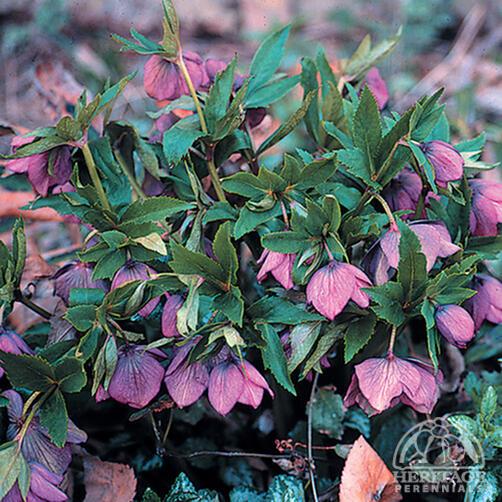Helleborus × hybridus mixture
Plant number: 1.256.400(aka Helleborus orientalis hybrids) 2005 PERENNIAL PLANT OF THE YEAR. The Lenten Rose is a close cousin to the more familiar Christmas Rose, and even easier to grow. Plants produce a bushy clump of thick, leathery evergreen leaves. Flower stalks appear in early spring, bearing large nodding flowers in many shades, from white through to cream, pink, red, purple and maroon, often with contrasting spots or streaks. Site these where they will stay for many years, since the plants resent being disturbed. Trimming the old leaves to the ground in late winter will make the show of flowers more easily seen. CAUTION: Harmful if eaten/Skin irritant. Further details for |
| All 124 results here | Alphabetical list of all 4,000+ perennials here |
Helleborus × hybridus mixture
Plant number: 1.256.400(aka Helleborus orientalis hybrids) 2005 PERENNIAL PLANT OF THE YEAR. The Lenten Rose is a close cousin to the more familiar Christmas Rose, and even easier to grow. Plants produce a bushy clump of thick, leathery evergreen leaves. Flower stalks appear in early spring, bearing large nodding flowers in many shades, from white through to cream, pink, red, purple and maroon, often with contrasting spots or streaks. Site these where they will stay for many years, since the plants resent being disturbed. Trimming the old leaves to the ground in late winter will make the show of flowers more easily seen. CAUTION: Harmful if eaten/Skin irritant. Further details for |






